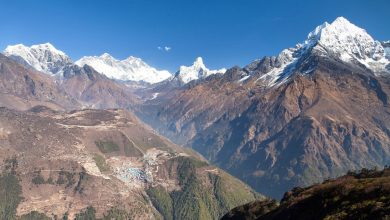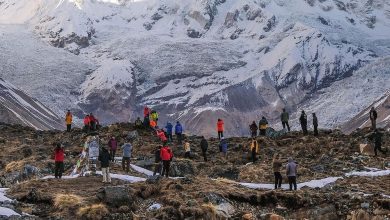Patan Durbar Square: The Living Museum With Historic Landmarks
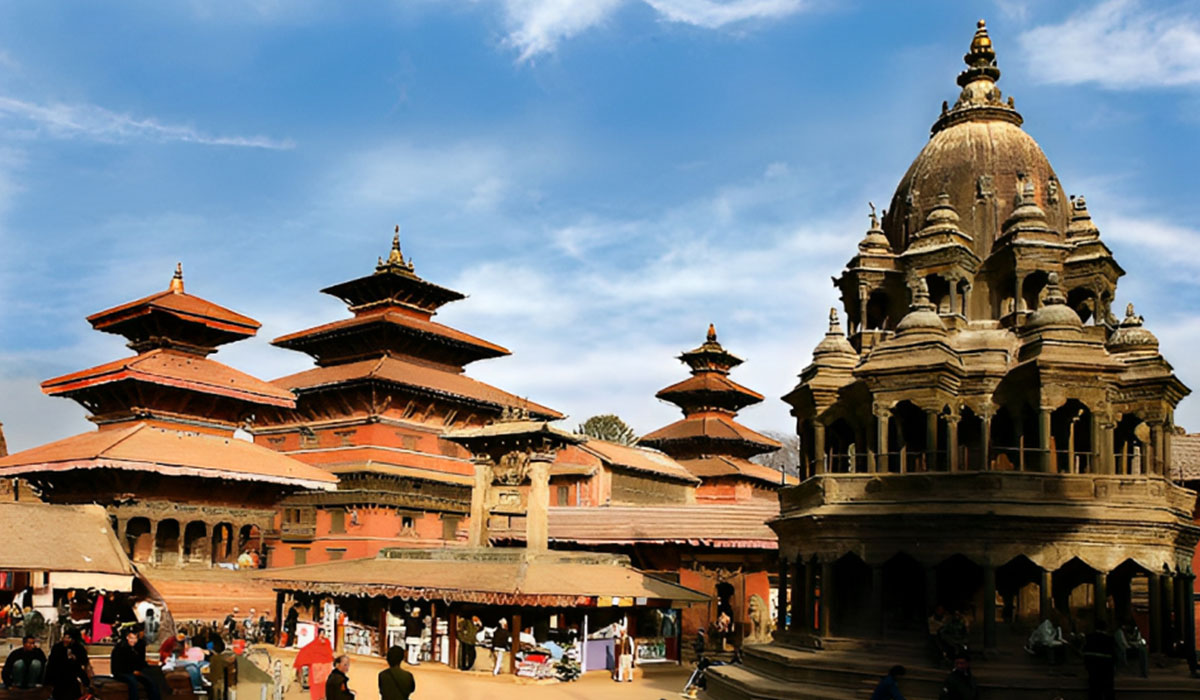
Patan Durbar Square is one of the oldest cities in Nepal. Though three centuries have passed since the last Malla king ruled the city, there has been plenty of renovation work here, which has made it possible never to lose the essence of what was once a kingdom. The town is truly a treasure to marvel at. You will find plenty of old houses, temples, and people walking restlessly through the courtyards of the palace. There is a museum, which was once a palace, and inside the museum, you will find plenty of jewels, statues, artifacts, and collections that have been protected since the oldest of times. The culture of the city has been, likewise, preserved since it began several centuries ago. Every year, people, especially from the Newari community, unite to celebrate festivals in unity. Hindu and Buddhist religions have influenced Patan a lot. Patan Durbar Square also has lots of food items to offer the visitors.
Furthermore, Patan Durbar Square is also one of UNESCO’s World Heritage Sites in Nepal. Though the earthquake of 2015 destroyed many beautiful aspects of the Durbar square, Patan has managed to build back stronger than ever. Tourists started visiting the city around a year after the tragic incident.
There are lots of interesting facts about Patan that are going to interest you; make sure to read till the end of this article to know more about Patan Durbar Square in Nepal!
History behind one of the oldest Durbar Squares in Nepal: Patan Durbar Square
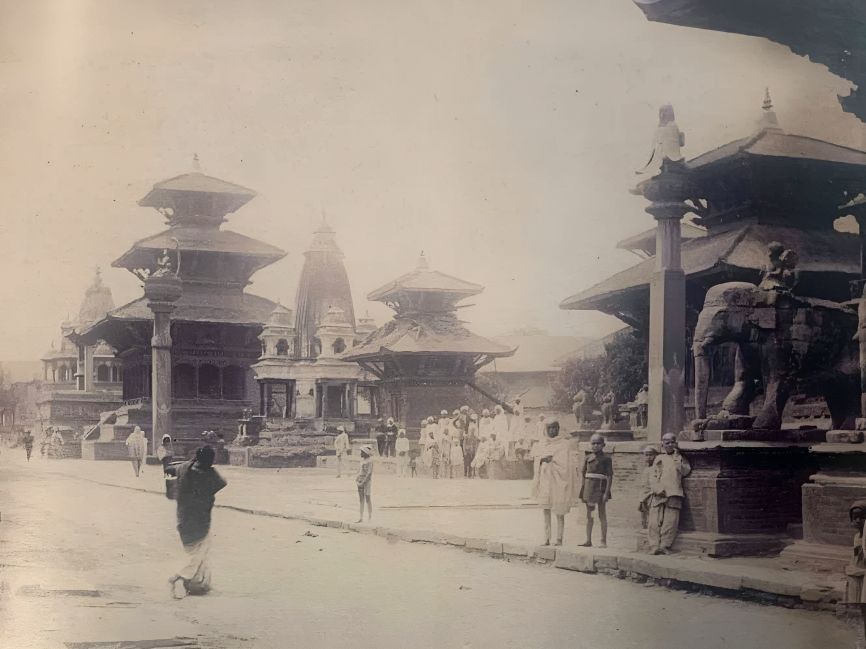
Taken by Joseph Gaye, 1888-1892.
The oldest known story of Patan Durbar Square in Nepal dates centuries ago. While the Malla kings have always gotten a fair share of credit for establishing a royal kingdom in the city, the Pradhanas have been known to be the oldest inhabitants of the town. Similarly, though it has not been mentioned in the history books as popularly, the Thakuris have also had some connections with the building and formation of the palace in Patan Durbar Square. Amidst all the mysteries of the ancient kingdom of Patan, some sure-shot evidence of what the city had once been is justified by the jewels, palaces, statues, culture, festivals, and scriptures that have been left by the rulers of the past.
Similarly, the city has long been dominated by Newari people who were traders, businessmen, craftsmen, artists, sculptors, etc. Hence, you will still find old shops selling pashminas, healing bowls, handmade dolls, copper and brass vessels, gold and silver ornaments, traditional Nepali clothes and accessories, Thanka paintings, statues, and idols in almost every other alley.
Taleju Bell
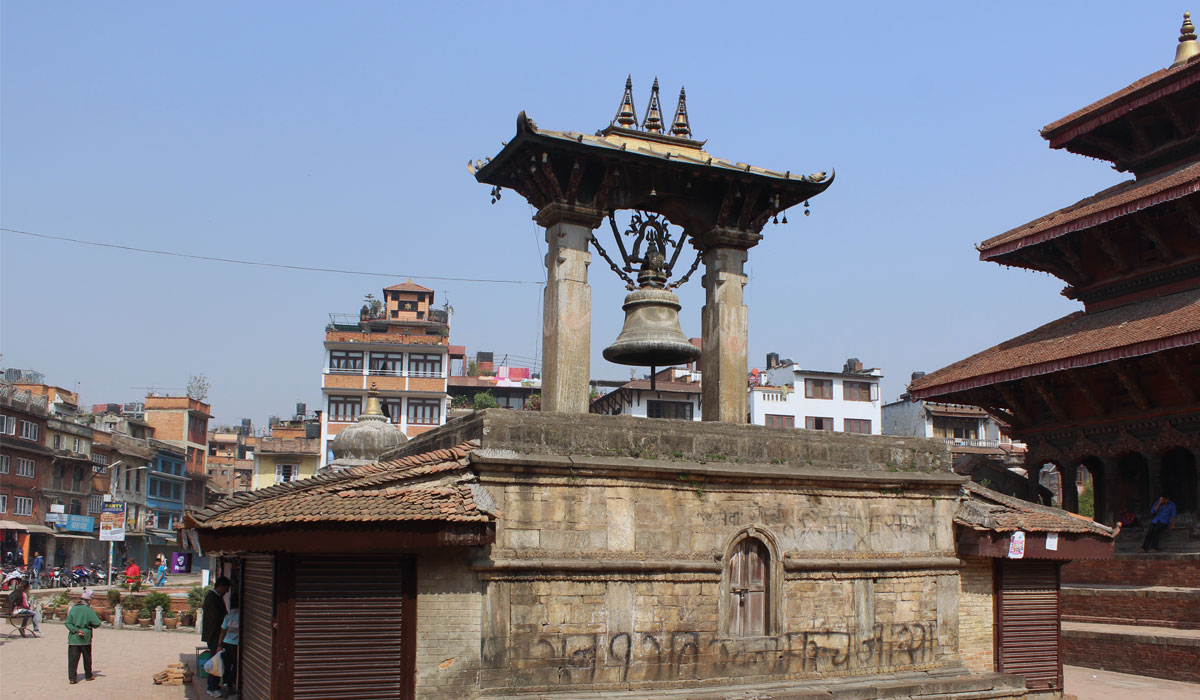
The Taleju bell is a massive bell that is still rigidly in the same place as it had been when King Vishnu Malla placed it outside the palace in 1736. The bell was donated in 1703 and moved to the Rato Machhindranath temple. The bell was used by the townspeople to alert the king about their problems or inform the people of Patan about any important news or notices.
Hari Shankar Temple
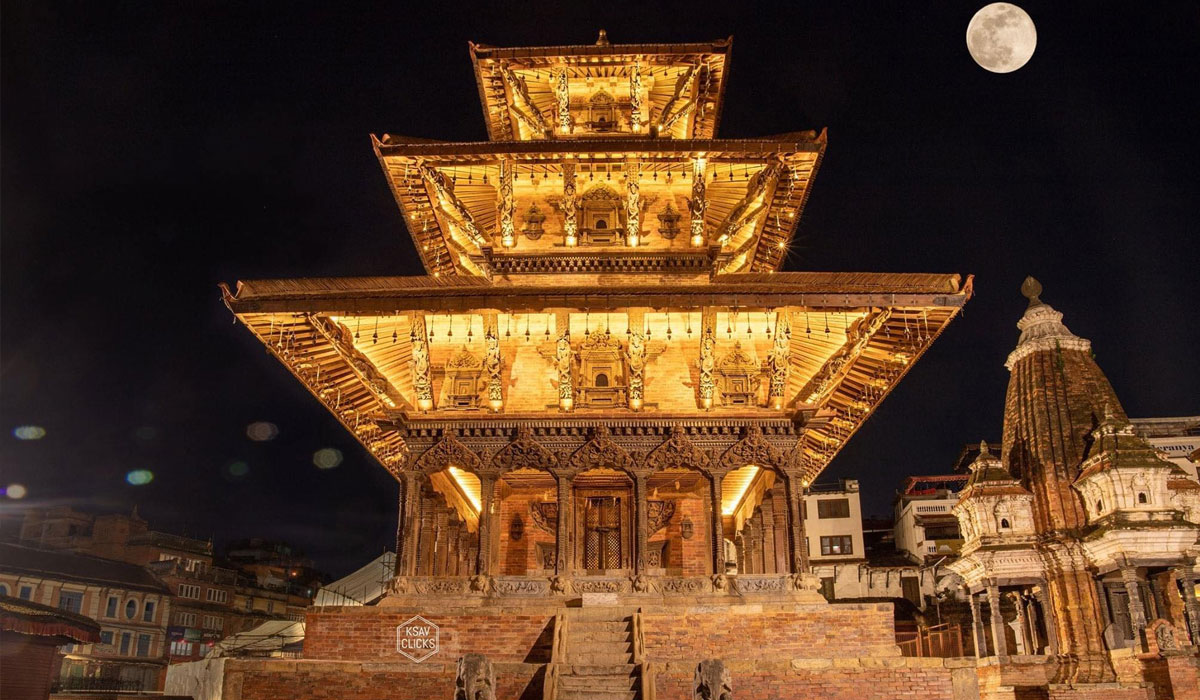
The Hari Shankar temple stands tall and very close to the Taleju bell. This temple was built by King Yogendra Malla’s daughter as a tribute to her father. The king is known to be a hybrid deity of Lord Vishnu and Lord Shiva. You will find scriptures in the temple that show the afterlife of those who end up in hell.
Yoga Narendra Statue
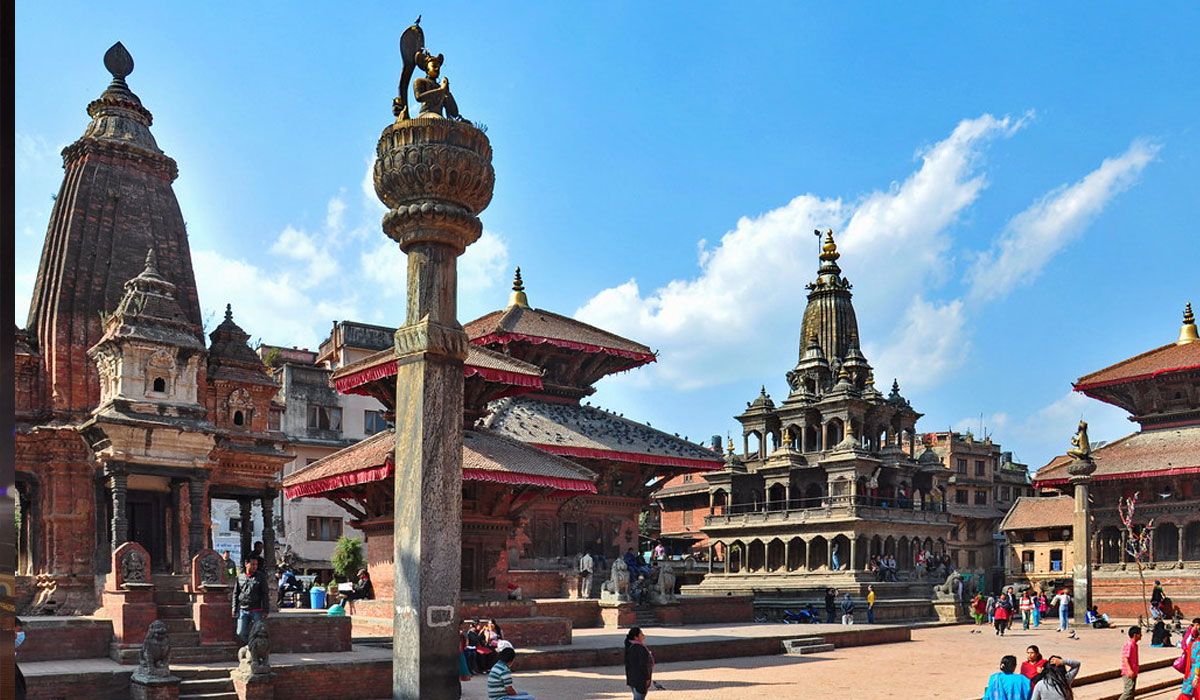
There is a tall column in the face of the Patan Durbar Square with a statue of King Yoga Narendra. This statue has a cobra covering the king, and a bird sits on top of the cobra’s head. The statue is of great significance. According to the legends in Patan, it is said that as long as the bird remains in the cobra’s head, the king might return to the palace. Hence, a door and a window forever stay open in the hopes of the king’s return while also having a hookah pipe ready inside a room in the palace. If the bird from the statue, whatsoever, flies away from the cobra’s head, the elephants from the Vishwanath temple are believed to walk to the hiti to drink water. Another legend suggests that Nepal will be destroyed wholly if the bird ever flies.
Jaggannarayan Temple
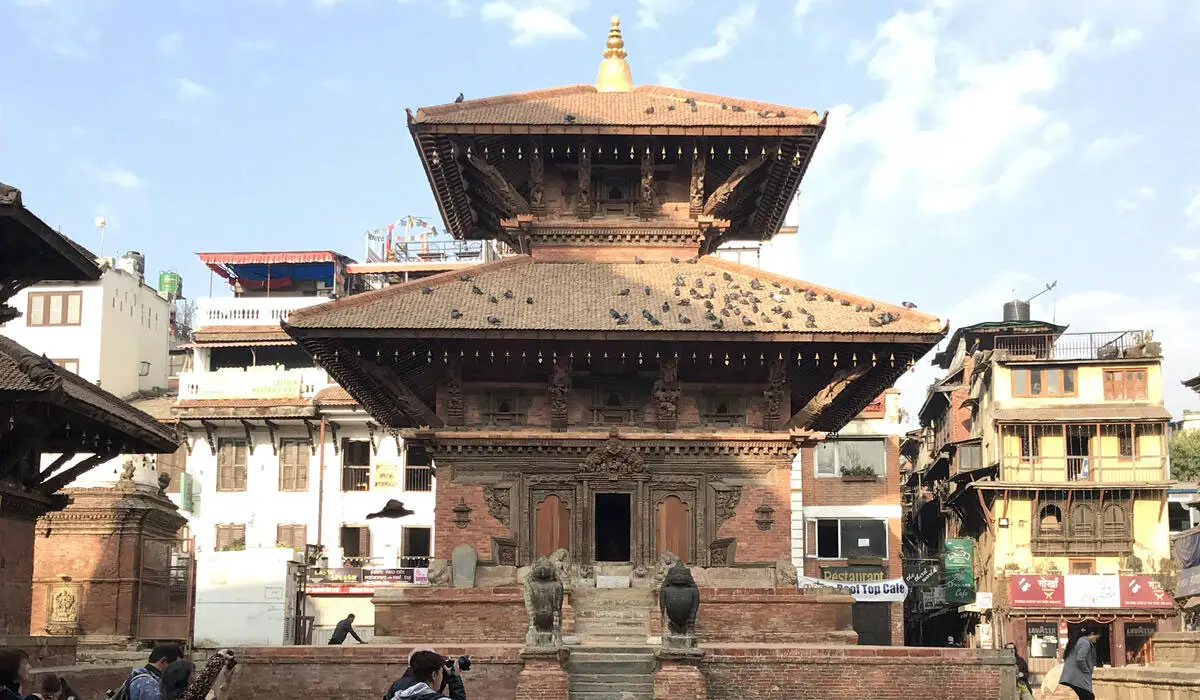
The Jaggannarayan temple was built in 1565 as a dedication towards Lord Vishnu. This temple is also known as Char Narayan Temple. The temple has several scriptures of gods, goddesses, and deities in different Kamasutra positions. The Jaggannarayan temple of Patan Durbar Square was also built during the Malla period.
Krishna Mandir
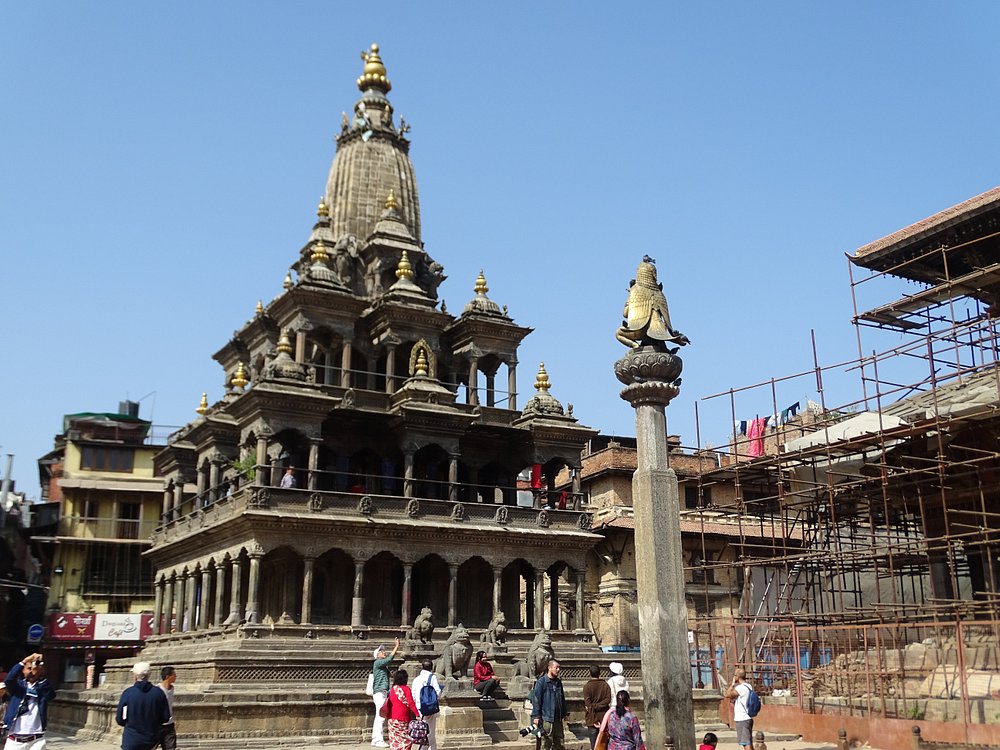
King Siddinarsingh Malla built the Krishna Mandir in 1637 with 21 golden pinnacles on top of the temple roof. The temple is said to have been built with a single stone. The king saw a dream where Radha and Krishna were in the exact same spot as the temple. The pillar on the first floor shows events from Mahabharata while the second floor shows events from Ramayana. The temple’s significance is known to almost every Hindu in Nepal. Hence, an immense number of people rush to Krishna Mandir on the auspicious day of Krishna Janmashtami.
Vishwanath Mandir
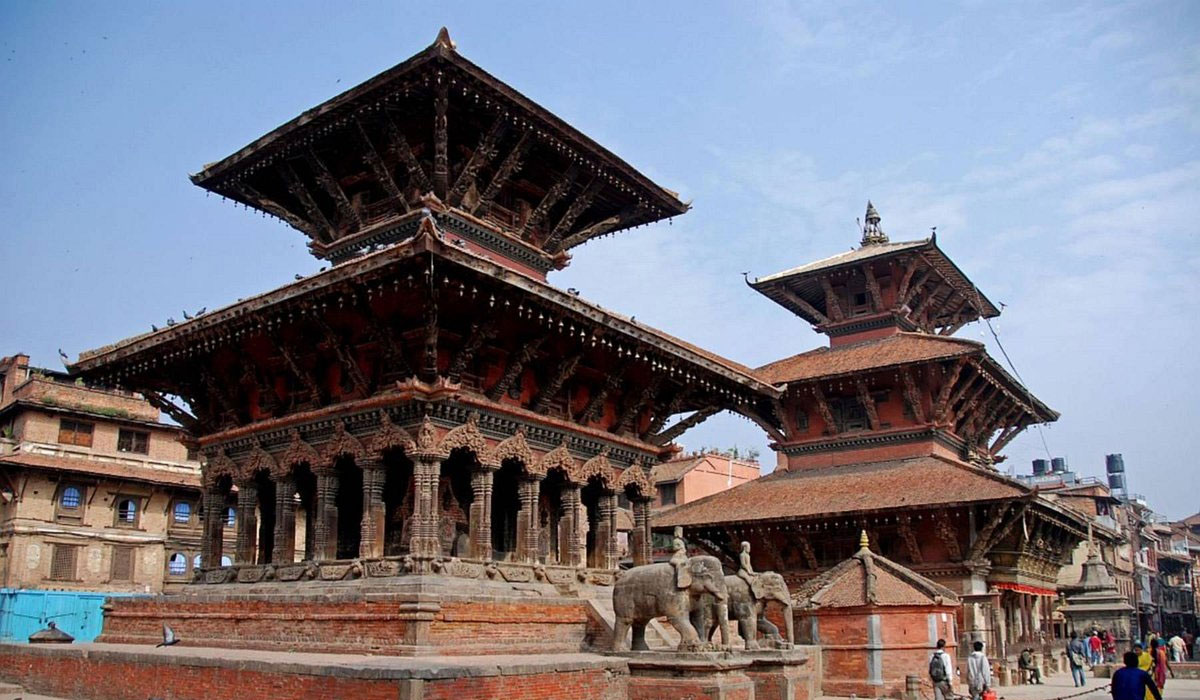
The Vishwanath Mandir in Patan Durbar Square was built during the reign of King Siddhinarsingh Malla in 1627. The temple is dedicated to Lord Shiva and has a Shiva Lingam inside. Similarly, there are two elephants at the entrance of the temple with a bull on the other side.
Bhimsen Mandir
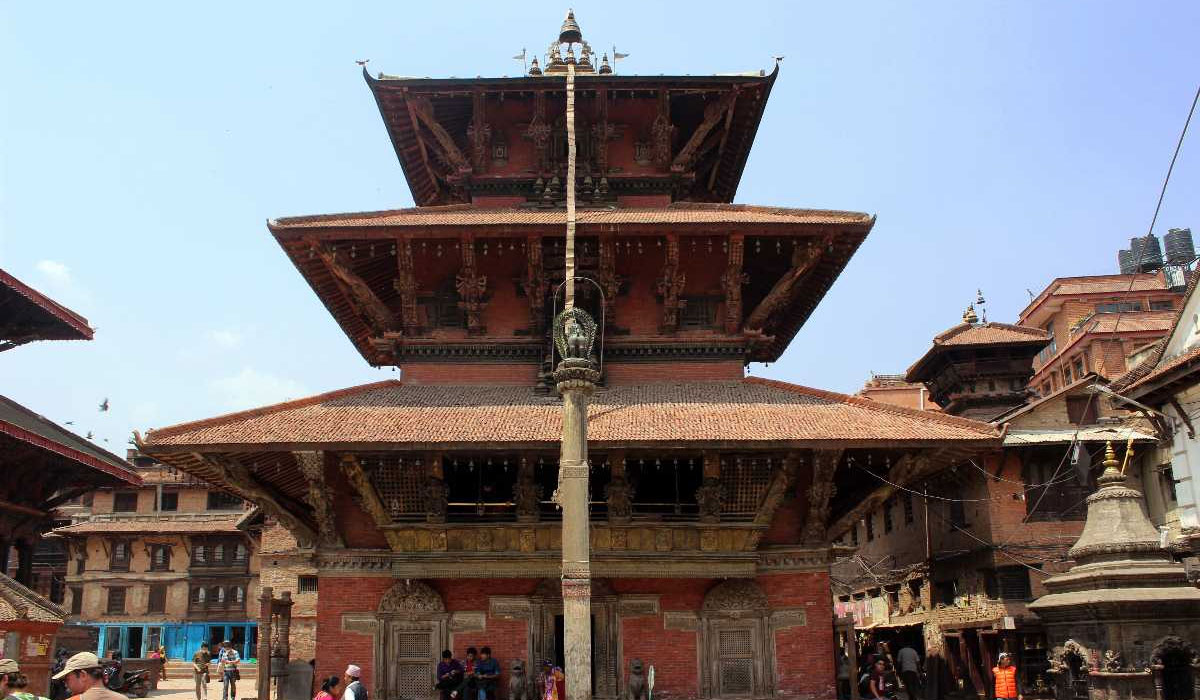
The Bhimsen Mandir was built during the ruling period of King Srinivasa Malla in 1680. Bhimsen temple is dedicated to Bhimsen, one of the five Pandavas in Mahabharata. Lord Bhimsen is considered the god of trade and business and is greatly regarded by people in Patan who have, since the oldest of times, been involved in trade and business.
Golden Temple
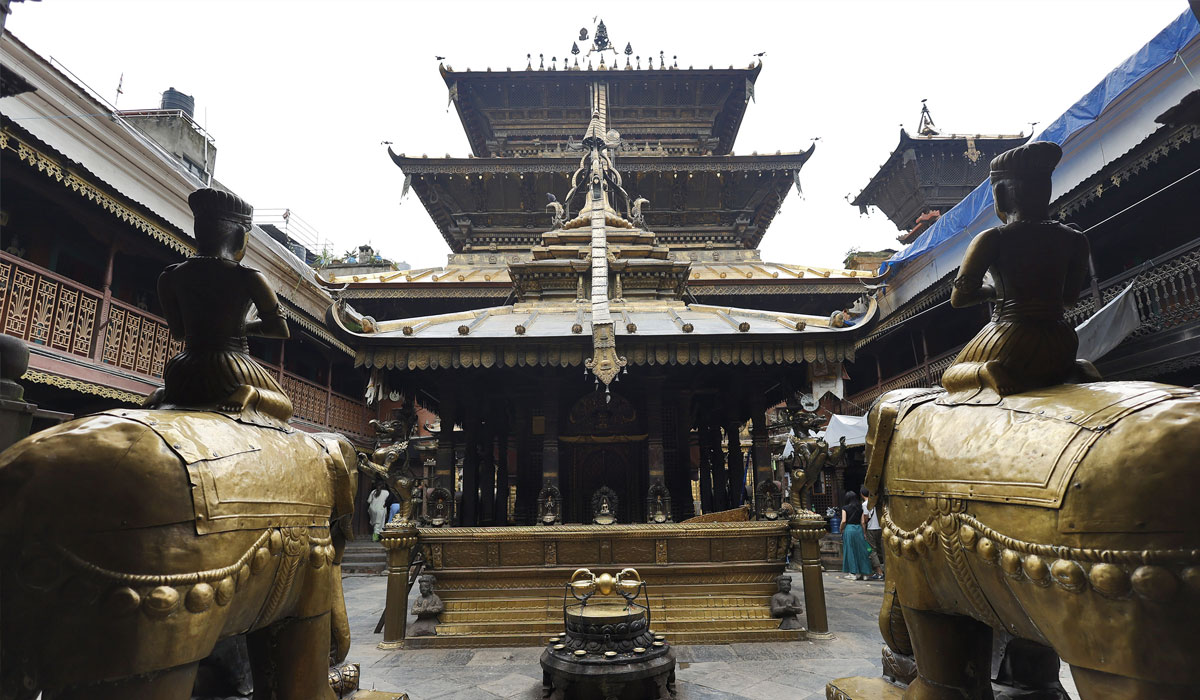
The Golden Temple, or Hiranya Varna Mahavihara in Patan Durbar Square, was built in 1409. This temple is located in the northern part of the city. The temple holds a serene figure of the Buddhist Shakyamuni. This temple is well-regarded by both Hindu and Buddhist followers.
Kumbeshwor
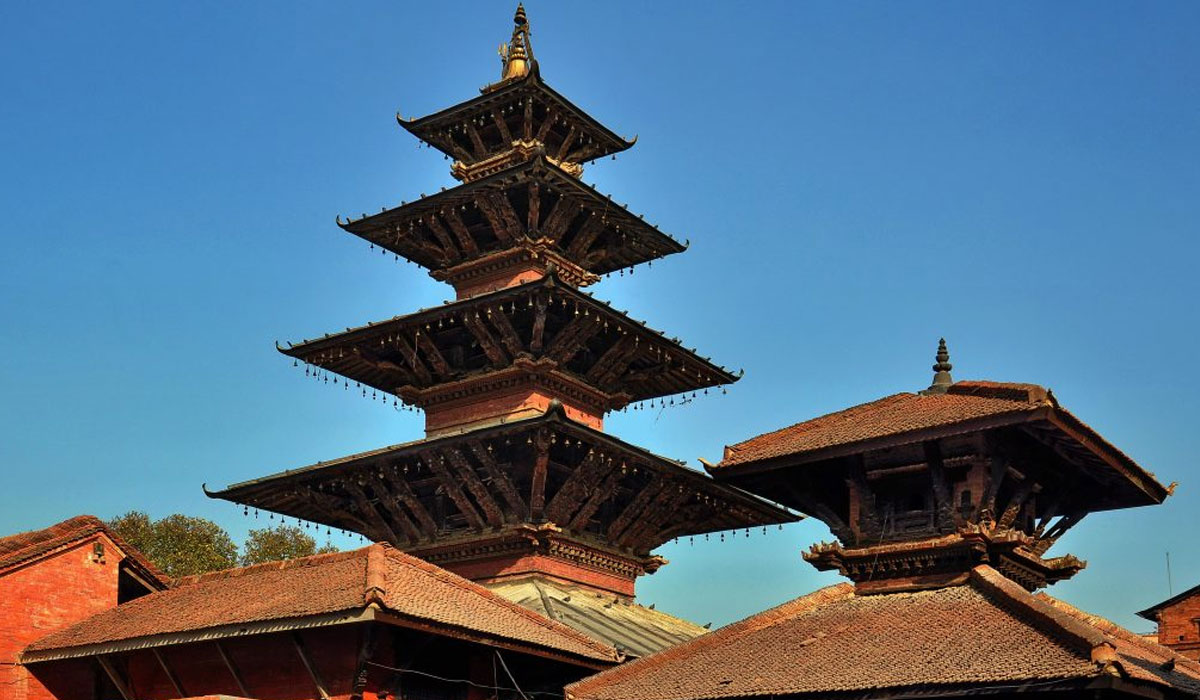
King Jayasthiti Malla built Kumbeshwor, also famously known as Banglamukhi, in Patan in the 14th century (1382). The temple is dedicated to Lord Shiva and Goddess Parvati. There is a big bull statue in front of the main temple, indicating Lord Shiva’s worship and transportation. There are two ponds in the temple, which gets its water from Gosaikunda Lake. The water source is open on Janai Purnima, where people often swim in the pond.
The Three Courtyards of Patan Durbar Square
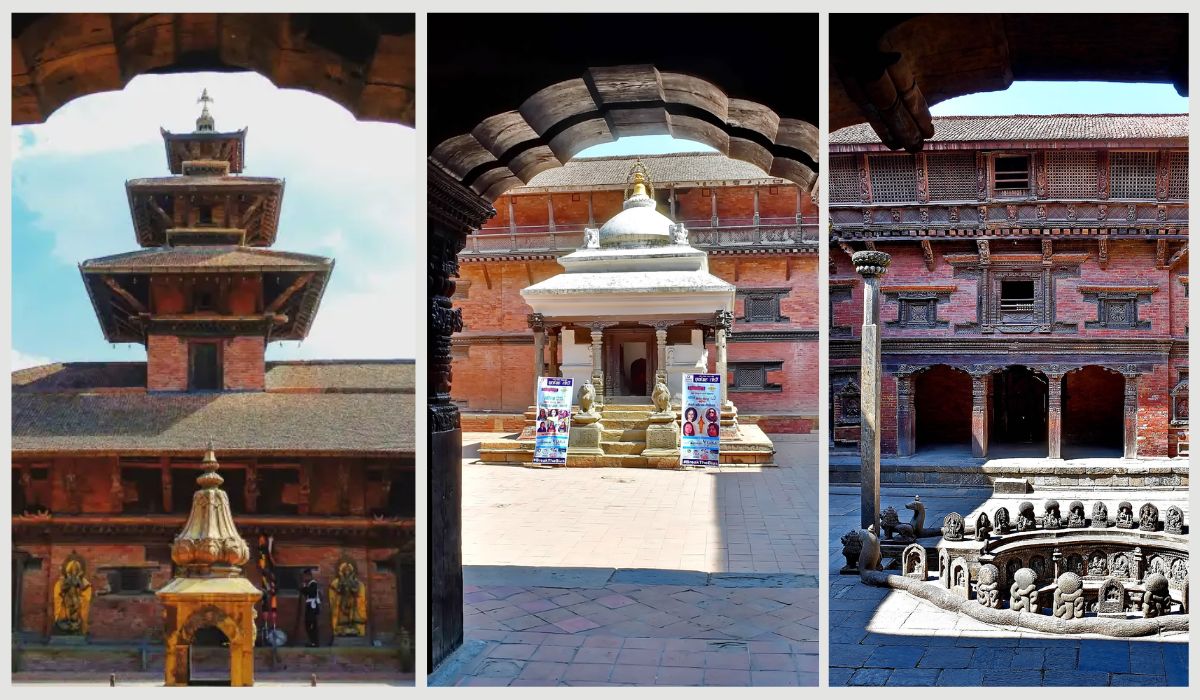
There are three courtyards inside the Patan Museum in Patan Durbar Square. These courtyards are namely Keshav Narayan Chowk, Sundari Chowk, and Mul Chowk. The Sundari Chowk courtyard is the smallest among the three that was built during the reign of Siddinarsingh Malla in 1647. There are idols of Lord Hanuman, Lord Ganesh, and Lord Narsingha outside the courtyard. The stone and bronze spout that is led downwards with a flight of stairs is known as Tusha Hiti. Royal Bhandarkhal Garden and Kamal Pokhari water tank are located just outside the small alley from Sundari Chowk.
The courtyard between Sundari Chowk and Keshav Narayan Chowk is known as Mul Chowk. This courtyard was built during the reign of King Siddhinarsingh Malla but was burnt by a fire in 1662. It was later rebuilt by King Srinivasa Malla in 1665-66. There are several Taleju temples in this courtyard that are dedicated to Goddess Taleju. She was the deity of the Malla royals.
The Keshav Narayan Chowk is the youngest courtyard. It was built in 1734 and lies at the heart of the Patan Durbar Square Museum.
Festivals Celebrated in Patan
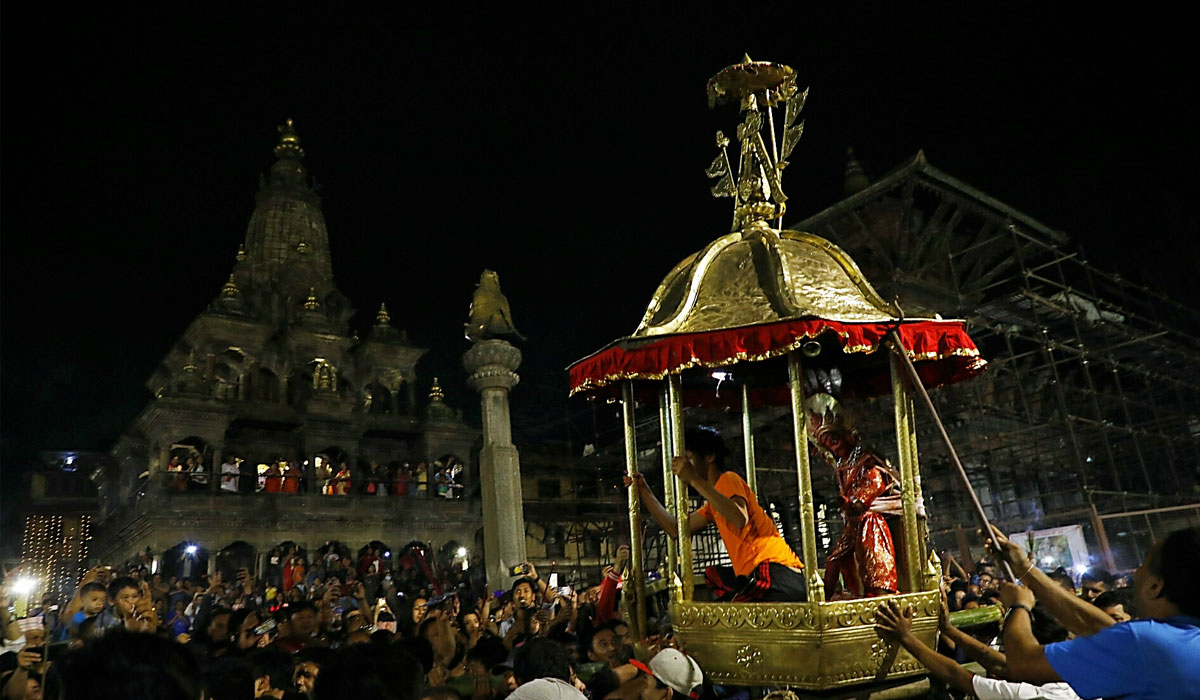
Patan are the home to different festivals that have been celebrated with great joy throughout centuries. Some of the main festivals celebrated in the city are Dashain, Rato Machhindranath Jatra, Holi, Gai Jatra, Bhimsen Rath Jatra, Krishna Janmashtami, Mataya, Bhimsen Jatra, Narsingh Jatra, Payo Jatra, Panchadaan, Mha puja, and Samyak Mahadan. Likewise, the folks in Patan have always been celebrating with dances during Dashain, like Gan Pyaakhan and Kartik Naach during the month of Kartik.
Dashain and Tihar are celebrated like any other place in the country. However, one can only experience the beauty of Gan Pyaakhan, a cultural dance performed during Dashain. This dance involves the tribute to Astramatirka (eight goddesses), Lord Ganesh, Kumar, and other deities. The dancers have to perform a special puja after their dance. Likewise, the dance starts in Nakabahil and ends in Patan.
Kartik Naach is another festival that is celebrated during or after Tihar in Nepali Kartik month. The tradition started during the reign of Siddhinarsingh Malla. The dance shows the tales of Lord Vishnu. The dance is performed in Patan Durbar Square or Patan Dabali every year. One of the most legendary moments of the Kartik Naach remains when, despite the destruction caused by the earthquake in 2015, the people of Patan still managed to perform the dance for 10 consecutive days.
Mha Puja in Tihar is celebrated as a Newari New Year. It was the time when people from the Newari community worshipped themselves as a form of loving oneself and maintaining purity within oneself. This festival is also known to renew a person’s being once a year.
Gai Jatra is a festival that dates back to the reign of King Pratap Malla between 1641 and 1671 AD. After the demise of teenage prince Chakravartendra Malla, the king decided to introduce this festival to cheer not only his queen and the mother of the prince but also the families of those whose close relatives have died. This tradition is believed to give a sounder afterlife to the dead.
Panchadaan and Samyak Mahadan are practices done by the Buddhist Newari community in Patan. Since there is a great importance of giving in the religion, these festivals are all about serving. Likewise, Holi is a celebration indicating the end of evil and the win of the greater good. Colors are greatly used to signify joy and happiness among everyone who comes to the streets to play or celebrate at home.
Patan Durbar Square Landmark
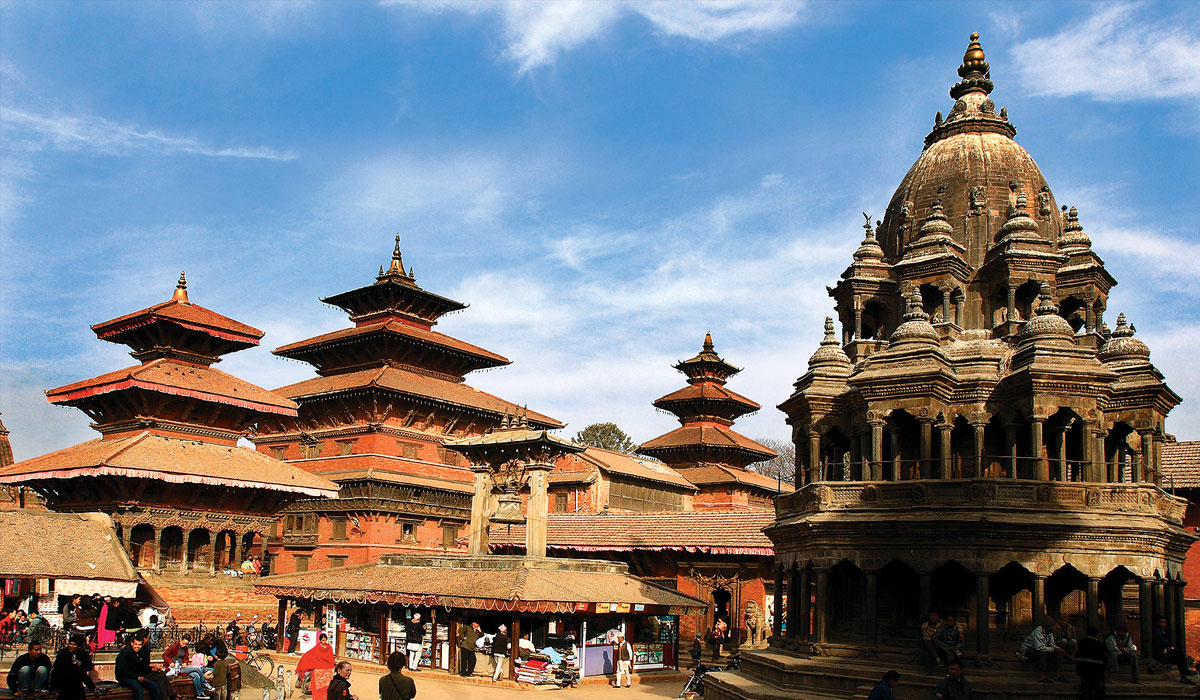
The primary landmark in Patan Durbar Square happens to be the Krishna Mandir Temple. A lot of people, especially those who follow Hinduism, use this temple as a synonym for the Durbar square area. While a lot of people around the area are locals and recognize the Patan Durbar Square as Krishna Mandir, any visitor should mention the temple rather than Patan Durbar Square itself if you want to get help getting there.
Where should you go when you are around Patan Durbar Square?
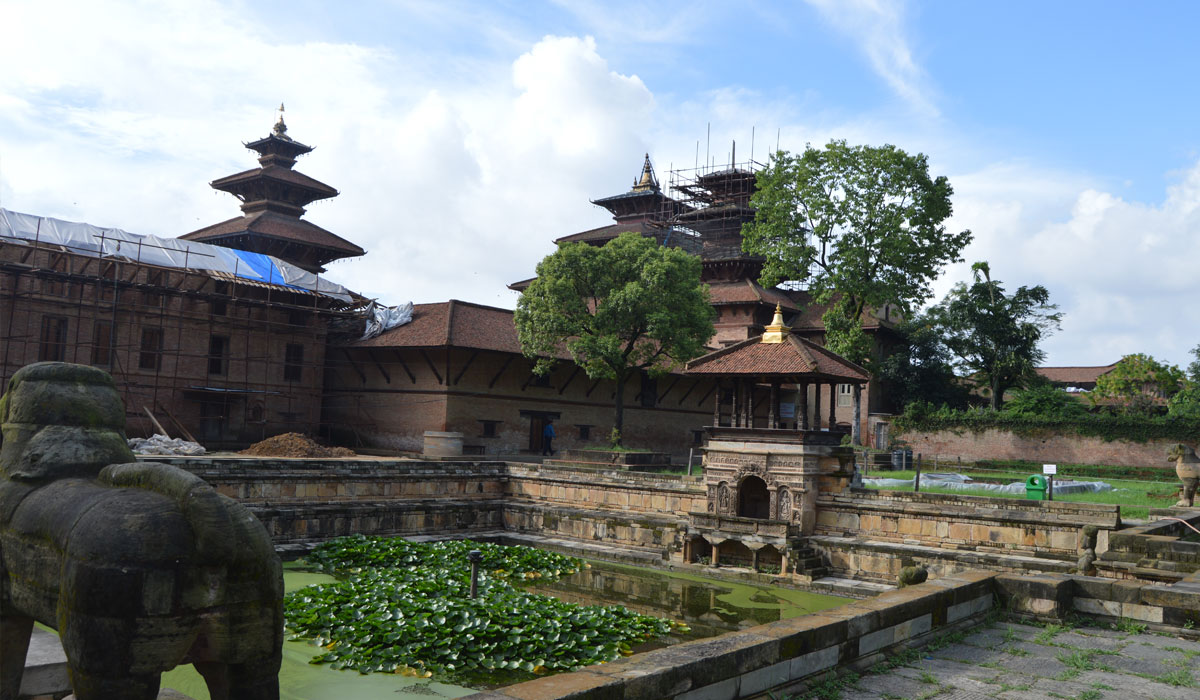
Patan Durbar Square is truly a treasure in Nepal that offers visitors the best places to go to. You will not, in any way, run out of options to go anywhere when you’re here. You can visit Krishna Mandir Temple, Bhimsen Temple, Golden Temple, Patan Museum, Banglamukhi Temple, Vishwanath Temple, Hari Shankar Temple, Taleju Bell, Yoga Narayan statue, and the Jagannarayan Temple when you are here. Likewise, if you want to shop for souvenirs, you can easily find shops inside the Patan Durbar Square area itself. There are plenty of eateries offering food varieties from different cuisines here. You don’t have to settle for only traditional food; however, there are many small and luxurious eateries serving the best of delicacies on every corner of Patan.
Frequently Asked Questions (FAQs):
What is Patan Durbar Square famous for?
Patan Durbar Square is famous for the shrines, monuments, temples, courtyards of the ancient palace, and idols.
When was Patan Durbar Square listed by UNESCO?
Patan Durbar Square was listen to by UNESCO in 1979.
Who was the king of Patan Durbar Square?
Siddhinarsingh Malla, the king of Patan Durbar Square, saw Radha and Krishna in his dreams.
What is the history of Patan?
The history of Patan started from the Lichchhavi period.
Who lived in Patan Durbar Square?
The kings of the ancient period lived in Patan Durbar Square’s royal residence, Maningal Rajprasad.
Also read:
